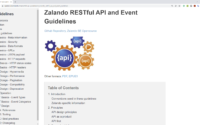How Meta trains large language models (LLM)
Adi Gangidi, KR Kishore, and Jenya Lee from Meta outline in the blog post “How Meta trains large language models at scale” Meta’s infrastructure advancements for large-scale AI model training. The post outlines the shift from numerous small jobs to fewer, larger ones, necessitating substantial changes in software, hardware, and network infrastructure to manage increased computational demands. Emphasis is placed on hardware reliability, fast failure recovery, and efficient GPU utilization, setting the foundation for a technical discussion on these innovations.
Most of the posts focus on improving training software and scheduling and optimising resource usage for faster and more reliable model training. Hardware adaptations are also discussed, including deploying powerful GPUs and specialized data centres tailored to handle large-scale training tasks. These sections highlight the critical steps Meta has taken to ensure continuous operation despite potential disruptions, showcasing the robustness of their systems.
Network optimization and data storage solutions are explored to support the high bandwidth and low latency required for efficient model training. The post describes enhancements in Meta’s network infrastructure and storage systems, designed to manage the vast amounts of data involved in training large language models. This technical overview provides insight into the comprehensive efforts behind these improvements.

While the post offers a broad overview, it primarily scratches the surface of these complex topics. Each section introduces essential components and strategies but lacks the depth needed for a full understanding. More detailed technical explanations and practical examples would help illustrate the challenges and solutions involved in large-scale AI training, enriching the reader’s comprehension.
Overall, the blog post serves as a valuable introduction to the topic, offering insights and directions for professionals in the field. The clear presentation and ambitious scope set a strong foundation for further exploration. Future posts could delve deeper into each aspect, providing a thorough understanding of the technologies and methodologies that enable large-scale, large-language models, thus benefiting the technical community and fostering innovation in AI infrastructure.
Related Posts

Advice on Reviewing for EMNLP — and ACM RecSys? [EMLP Blog]

An update to dislikes on YouTube and it’s use in the recommender system

Zalando publishes its RESTful API and Event Guidelines
About The Author
Joeran Beel
I am the founder of Recommender-Systems.com and head of the Intelligent Systems Group (ISG) at the University of Siegen, Germany https://isg.beel.org. We conduct research in recommender-systems (RecSys), personalization and information retrieval (IR) as well as on automated machine learning (AutoML), meta-learning and algorithm selection. Domains we are particularly interested in include smart places, eHealth, manufacturing (industry 4.0), mobility, visual computing, and digital libraries. We founded or maintain, among others, LensKit-Auto, Darwin & Goliath, Mr. DLib, and Docear, each with thousand of users; we contributed to TensorFlow, JabRef and others; and we developed the first prototypes of automated recommender systems (AutoSurprise and Auto-CaseRec) and Federated Meta Learning (FMLearn Server and Client).
